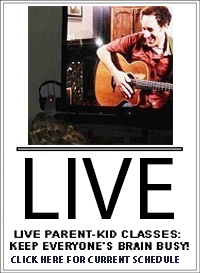The Latin/Caribbean “clave” is the pattern of beats that lays the rhythmic foundation for many genres of Latin music, from Cuban son to Jamaican mento to Puerto Rican salsa and beyond. But the clave is much more than a pattern–it’s a feeling, a motion, an unspoken sense. One may say the clave “originated” in Cuba due to the fact that Cuban “son” music was the first to feature a full manifestation of a syncopated rhythm that mixed syncopated African 6/8 beats with the Spanish 4/4, but really the clave is a pattern that developed in Africa over hundreds if not thousands, if not hundreds of thousands, of years and just happened to accompany African slaves on their forced passage to the colonized West. (MamboCity’s introduction to clave, “Clave: the African Roots of Salsa,” seems to lay out the West Africa to Cuban son [via Cuban “rumba”] history well.)
Remember also that musical notation, especially rhythmic notation, doesn’t make the music but only feebly attempts to represent it so those of us who may not intrinsically “get it” can “understand.” The music itself comes first–what feels real, what feels right. For much Caribbean music, the pattern we’ll come to know as the clave feels “right” as a foundation. Clave is the heart and soul of so much Latin music. Let’s not allow the head to get in the way.
With that said, the beats of clave do have a very distinct and specific location within particular measures. There are four basic clave patterns. Click on the links to listen. (This Rhythmweb page lays it out fairly clearly and provides the audio examples linked below.)
— the 3-2 son clave: within two 4/4 measures the 3-2 son clave has three beats in the first measure and two in the second. Try counting, putting emphasis on what’s in bold and in caps
ONE and two AND three and FOUR and, one and TWO and THREE and four and. (Go ahead, count it out. Don’t be afraid.)
— the 2-3 son clave: two beats in the first measure, three in the second:
one and TWO and THREE and four and, ONE and two AND three and FOUR and.
— the 3-2 rumba clave: three beats in the first measure, two in the second, with a slight pause before the third beat in the first measure.
ONE and two AND three and four AND, one and TWO and THREE and four and.
— the 2-3 rumba clave: two beats in the first measure, two in the second, with a slight pause before the third beat in the second measure
one and TWO and THREE and four and, ONE and two AND three and four AND.
Whether a song’s clave is 3-2 or 2-3 depends on the way that particular piece of music feels. If musicians don’t find the right rhythmic essence of a song and start off on a 2-3 clave when the song is 3-2, they risk being “out of clave,” which is, to passionate Latin musicians, a dreadful sin. Throughout the tour of Caribbean genres we’ll take below we’ll note which genres rely on the clave, which don’t, and which take the clave and disrespectfully turn it on its ear.
The basic clave pattern does have its roots in Africa, where the syncopated rhythm appears as “the bell pattern” (often played on the gankogui bells) that is the cornerstone of many rhythms. For example, a common West African bell pattern is very much like son clave–listen to the 1-2-3, 1-2 pattern this drummer uses to start his lesson, using a kpanlogo drum.





Comments are closed.